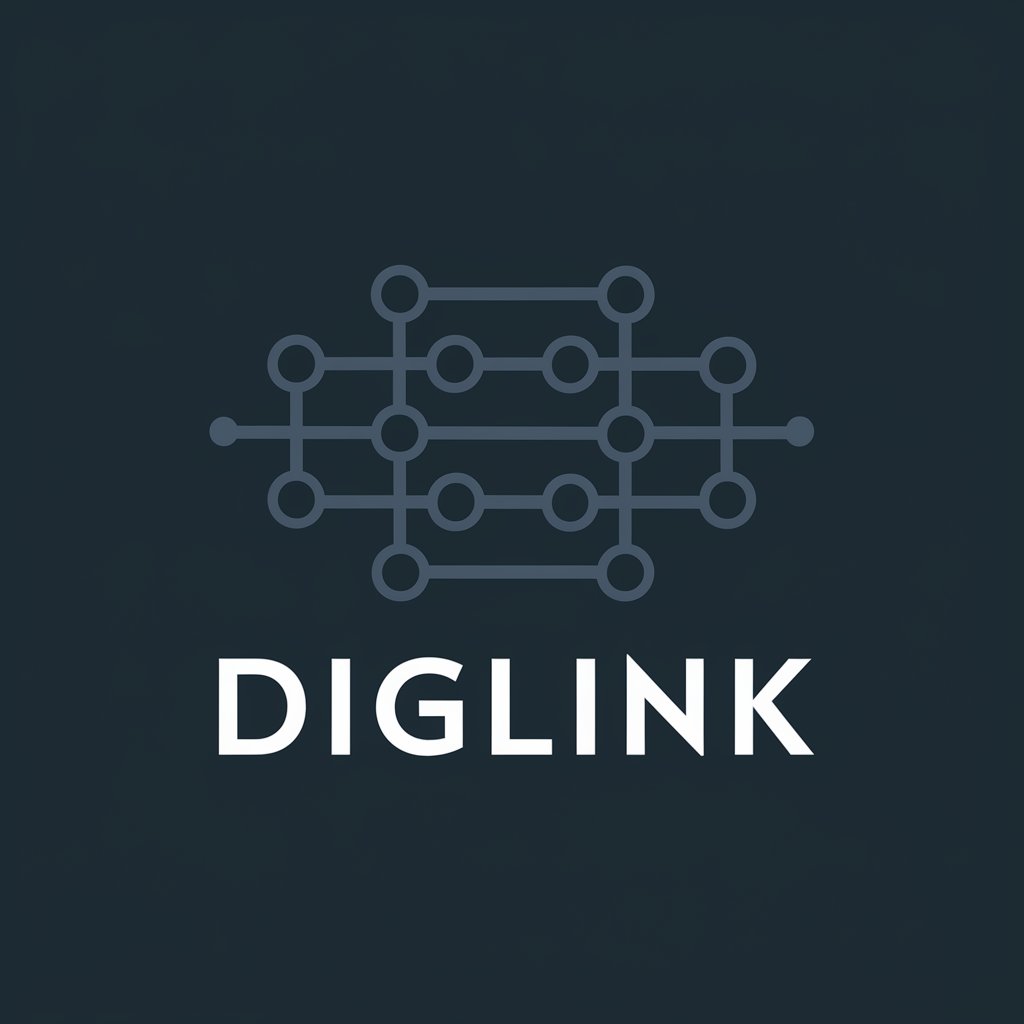DIGLINK - URL Extraction Tool for Large Datasets

Welcome to DIGLINK, your go-to tool for precise URL organization!
Transform Text into Data with AI-Powered Extraction
Generate a list of URLs followed by spaces and text for data processing.
Identify and isolate URLs from a given extensive list for organizational purposes.
Extract URLs with accompanying text to ensure clarity and accuracy in data management.
Provide an efficient method for processing URLs in large volumes, maintaining sequence and context.
Get Embed Code
Introduction to DIGLINK
DIGLINK is designed as a specialized tool focused on analyzing and organizing URLs within large volumes of text. Its core functionality revolves around identifying URLs that are not standalone but are followed by a space and then succeeded by additional text. This precise functionality makes DIGLINK adept at parsing and categorizing complex data sets where URLs and text are intermingled. For instance, in a scenario where a user has a document filled with various resources, notes, and links, DIGLINK can efficiently sift through the content, isolating URLs that are followed by descriptions or annotations. This capability is crucial for data analysis, content management, and digital archiving, offering a streamlined approach to managing web links embedded in text. Powered by ChatGPT-4o。

Main Functions of DIGLINK
URL Identification and Isolation
Example
In a document containing a list of research papers with accompanying URLs and brief descriptions of each, DIGLINK can isolate each URL along with its description for easier review.
Scenario
Academic researchers compiling resources for a literature review would find this function invaluable, as it simplifies the process of extracting and organizing digital resources.
Sequence Preservation and Context Maintenance
Example
When processing a blog's export file that includes URLs to cited sources followed by annotations, DIGLINK retains the original order and context of each URL.
Scenario
Bloggers or content creators looking to audit or migrate their content would benefit from this functionality, ensuring that no contextual information is lost during the process.
Ideal Users of DIGLINK Services
Content Managers and Archivists
Individuals responsible for managing large digital content libraries or archives. They benefit from DIGLINK's capabilities by efficiently organizing links and associated annotations, making digital content easier to navigate and reference.
Researchers and Academics
This group includes anyone compiling research, papers, or studies that involve the use of numerous online resources. DIGLINK helps them by extracting URLs and associated notes from their compilations, aiding in the organization and accessibility of their references.
Digital Marketers
Professionals in digital marketing who manage numerous campaigns and content pieces across different platforms. They can use DIGLINK to analyze and organize URLs in marketing materials, ensuring accurate tracking and categorization of online resources.

How to Use DIGLINK
Initiate Trial
Access yeschat.ai for a complimentary trial without the necessity for login or ChatGPT Plus subscription.
Upload Data
Prepare your dataset containing URLs, ensuring they are in plain text format for optimal processing.
Specify Parameters
Set the parameters for the URL extraction, specifying any particular requirements or conditions for the URLs you need to isolate.
Execute Extraction
Start the extraction process, where DIGLINK will analyze the text, identify, and segregate non-standalone URLs effectively.
Review Results
Examine the output for accuracy, adjust parameters if needed, and export the data for your specific use case.
Try other advanced and practical GPTs
Lonely Executive's Personal Coach
Empowering Executives with AI

Movies GPT
AI-powered tool for movie exploration.

Movies To Watch
Your AI-powered Cinema Guide

Top 10K Movies Analyst
Explore Cinema with AI-driven Insights

Movies and Anime Recommendations
Discover Your Next Favorite Movie or Anime!

Action Movies GPT
Discover Action Cinema with AI

Kid colored pencil style by Ohho AI
AI-powered playful colored pencil drawings
Python Expert
Empowering Your Python Journey with AI

Meme Master
Craft Memes with AI Power

The Bulls Legacy
Revive the Bulls' Legacy with AI

Spooky Cover Creator
Craft Your Fear with AI

Spooky Visualizer
Craft Your Creepy with AI

Frequently Asked Questions About DIGLINK
What is DIGLINK primarily used for?
DIGLINK is designed to efficiently identify and extract non-standalone URLs from large datasets, presenting them in a clear and orderly format.
Can DIGLINK handle data from multiple sources?
Yes, DIGLINK can process URL data from a variety of sources as long as they are presented in a plain text format.
Is there a limit to the amount of data DIGLINK can process?
DIGLINK is optimized for handling large volumes of data without a predefined limit, making it suitable for extensive datasets.
How does DIGLINK ensure the accuracy of URL extraction?
DIGLINK utilizes advanced algorithms to accurately differentiate and extract URLs, ensuring minimal errors in the isolation process.
Can I use DIGLINK for academic research?
Absolutely, DIGLINK is an excellent tool for academic researchers looking to extract and analyze URL data from large volumes of documents or web pages.
